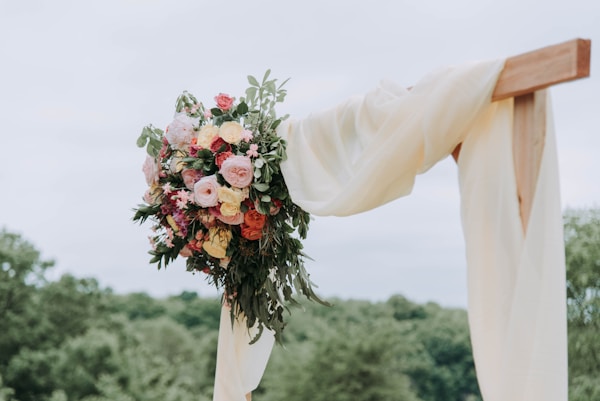Understanding the Art of Designing a Wedding Dress with a Structured Bodice and Layered Tulle Skirt
Weddings are one of the most cherished moments in a person’s life, and the wedding dress is often the centerpiece of this celebration. When it comes to wedding dress design, certain techniques are employed to create stunning looks, particularly those featuring a structured bodice paired with a layered tulle skirt. In this article, we will delve into the various techniques used in such designs and explore the craftsmanship that makes these dresses so spectacular.
The Basics of Wedding Dress Design
Wedding dress design is a blend of art and engineering. The structured bodice serves as the foundation of the dress, providing silhouette and support, while the layered tulle skirt adds volume and movement. Designers utilize several techniques to achieve this exquisite balance, and understanding them can help brides make informed choices when selecting their perfect gown.
Key Techniques in Designing a Structured Bodice
The bodice of a wedding dress is crucial for creating an elegant shape and flattering fit. Designers use various methods to construct a structured bodice, which can include:
- Boning: This technique involves adding flexible strips, often made of plastic or metal, that help the bodice maintain its shape. Boning supports the structure without compromising comfort.
- Interfacing: Interfacing is a fabric that is sewn into the bodice to give it extra firmness. This technique is essential for achieving a tailored appearance.
- Princess Seams: These are long, curved seams that run down the length of the bodice. They are designed to create a smooth, fitted shape and enhance the silhouette.
The Role of Fabrics
The choice of fabric is pivotal in wedding dress design. For a structured bodice, fabrics such as silk, satin, or organza are commonly used due to their ability to hold shape. Each choice offers different qualities:
| Fabric Type | Characteristics |
| Silk | Luxurious and lightweight, drapes beautifully |
| Satin | Heavy, smooth finish, excellent for structured designs |
| Organza | Stiff, sheer, ideal for layering and adding volume |
Incorporating a Layered Tulle Skirt
The layered tulle skirt is what gives a wedding gown its enchanting fairy-tale appeal. To create this effect, designers typically use multiple layers of tulle, often combined with other fabrics for added volume. Some techniques for constructing a tulle skirt include:
- Gathering: Gathering involves shortening one edge of the fabric by sewing it with a loose stitch, allowing the fabric to ruffle and create volume. This technique is essential for achieving the full, flowing look of a tulle skirt.
- Tiering: This construction method stacks layers of tulle upon one another, gradually increasing the length. Tiering enhances the dress's elegance and creates a whimsical vibe.
- Crinoline Underlayers: Adding crinoline (a stiff fabric) beneath the tulle creates even more volume. This layer helps the tulle to stand away from the body, creating a dramatic silhouette.

Combining Techniques for a Cohesive Design
Cohesion in design is about how well different elements work together. When designing a wedding dress with a structured bodice and a layered tulle skirt, it is essential to ensure that both parts harmonize in style and function. Designers often incorporate decorative elements like lace appliqué, embroidery, or beading to seamlessly connect the bodice with the skirt.
Popular Trends in Wedding Dress Designs
When exploring techniques, it is also crucial to consider current trends. The following trends have gained popularity in recent years:
- Off-Shoulder and One-Shoulder Styles: These designs highlight the collarbone and add a touch of sophistication.
- Backless Designs: A structured bodice can be paired with a dramatic backless style, revealing skin while maintaining elegance.
- Colored Tulle Skirts: While white is traditional, subtle colors like blush, lavender, or even pale blue are becoming popular choices, adding a modern twist.
The Importance of Custom Fitting
Regardless of the chosen design techniques, the fit of the wedding dress is crucial. A structured bodice requires precise measurements to avoid any discomfort or awkwardness during the ceremony. Many brides opt for bespoke couture gowns, where the designer takes detailed measurements and customizes the dress for the perfect fit.
Working with Professional Designers
Finding the right designer is part of the journey toward the perfect wedding gown. Women should seek out professionals who specialize in wedding dress designs and have experience with structured bodices and layered tulle skirts. This expertise ensures quality craftsmanship and a stunning final product. Brides should always ask for a portfolio and customer testimonials, which can help in making an informed decision.
Conclusion: Crafting Your Perfect Wedding Dress
Designing a wedding dress with a structured bodice and layered tulle skirt involves a myriad of techniques and considerations. From selecting the right fabrics to incorporating design elements that enhance the overall flow and appearance, the choices are vast. It's essential for brides to understand the various techniques involved in their gown's construction, educating themselves on elements such as boning, gathering, and the importance of custom fitting. By collaborating with the right designer and utilizing the current trends, brides can ensure their wedding dress is not only beautiful but also a true reflection of their personal style. Remember to embrace this creative journey and trust in the expertise of skilled designers—you are crafting a vision that will be remembered for a lifetime.